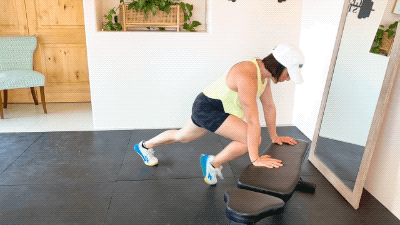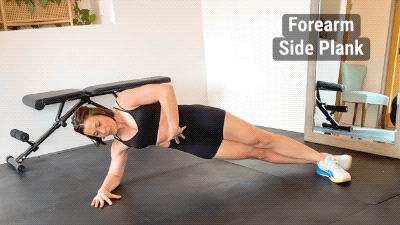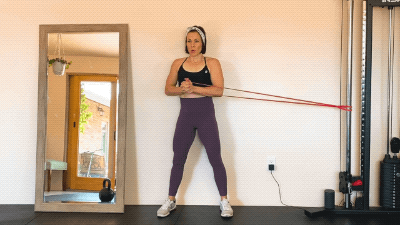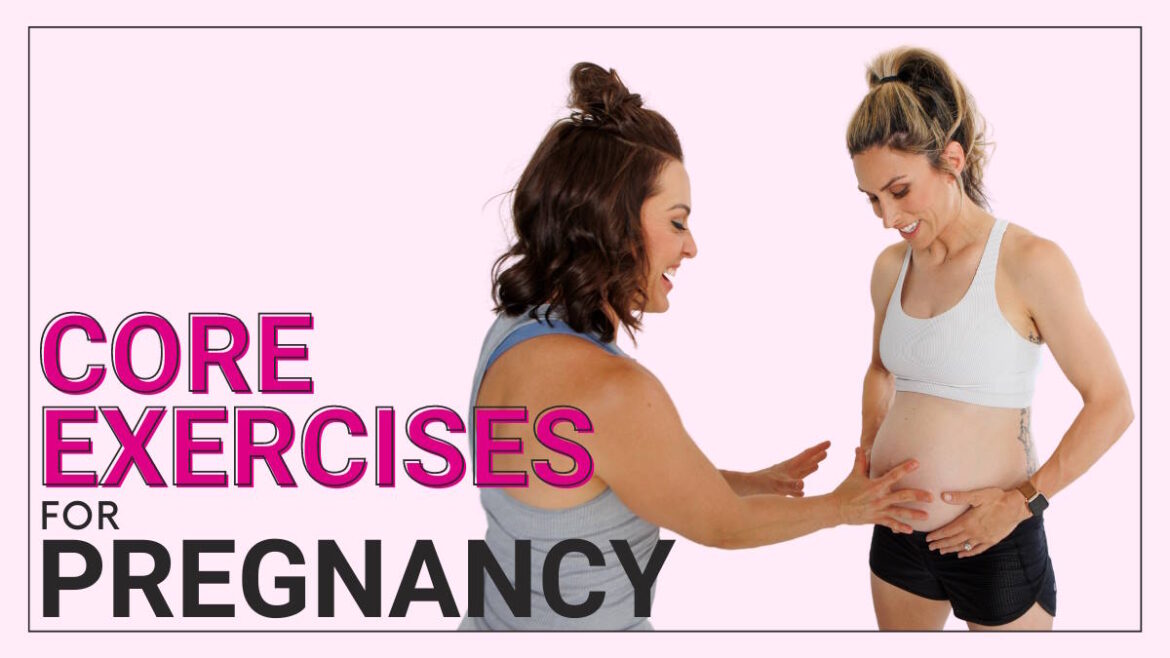Congratulations! You are expecting a baby! But when it comes to staying fit while pregnant, you probably have a million questions. Especially about your core exercises and how they will change.
Is it ok to do core exercises in the first trimester? How about planks? Crunches? Is it ok to exercise the core while pregnant?
You can absolutely exercise and even train your core during pregnancy. That said, what and how you perform core exercises matters.
Is It Ok to Do Core Exercises While Pregnant?
Yes! With your practitioner’s ok, it’s safe to do ab exercises while pregnant.
However, you’ll want to avoid movements that put pressure on the core’s connective tissue (linea alba). Extra outward strain on your abdominal wall can result in diastasis recti, or abdominal separation, pelvic floor dysfunction, and more.
You might also notice coning during pregnancy. This happens as the connective tissue of your core thins and widens. Your insides can press against the tissue, causing a bulge during certain movements. While you and your baby are safe, try to avoid coning, because it can increase the extent of diastasis recti you experience now and postpartum.
To stay your strongest, focus on your deep abdominals (transverse abdominals). The TVA are an important muscle system. They act as a natural back brace as you carry your baby, reduce back pain, and support the pelvic floor during and after pregnancy.
Modifying ab exercises for pregnancy will help you keep your core strong AND safe.
What Exercises Strengthen Your Core While Pregnant?
Now is the time to ditch the sit-ups, crunches, twisting movements, and planks. These exercises aren’t BAD, but they put an unnecessary amount of pressure on the core and connective tissue. Instead, focus on your deep core system and make modifications to accommodate your growing baby.
The following are some of the best tips and pregnancy core exercises to keep you strong during pregnancy.
Core Breathing
The foundation of a strong core – at any stage – is breathing. How you breathe has a major impact on your core and pelvic floor. Proper breathing will help keep you and your body strong.
Work daily on deep abdominal breathing techniques and core engagement throughout your pregnancy:
- Start by laying on your side. This removes gravity from the equation.
- Place your hand on your ribs and inhale deeply through your nose. You should feel your rib cage expanding, like an umbrella, and overflow air going down into your belly. You don’t want your shoulders to rise.
- Exhale audibly out your mouth with a “hhhhaa” or “sssss” sound. On exhale, lift pelvic floor and imagine pulling your belly button in and up.
Do This, Not That:
There are a few exercises to avoid during pregnancy, like twisting and sit-ups. Instead, try alternative exercises that work your abdominal muscles in a safe way.
Begin modifying your ab workouts as soon as you find out you’re expecting. You may need to make more adjustments as you get into later trimesters. They will help support your deep core and keep you safe throughout your pregnancy.
1. Heel Taps and Seated Marches instead of Sit-ups
Lay on the floor and alternate tapping your heels. Doing sit-ups while pregnant can put on too much pressure or pull on the abdomen. Seated marches are also effective, especially later in pregnancy.

2. Wall Planks instead of Prone Planks
Do modified planks instead of the traditional on-the-floor type. Using a wall to support yourself minimizes excessive pressure and gravity pressing down on your abdomen.

3. Elevated Mountain Climber instead of Prone Mountain Climbers
Use a supportive surface, like a bench or chair, while you do mountain climbers. The higher the surface, the more protective of the core.

4. Forearm Side Plank instead of Russian Twists
Twisting compresses the space where your baby can move around. Any kind of twisting motion tends to compress the abdominals and should be avoided during pregnancy. A modified side plank works the obliques without compressing the core.

5. Pallof Press instead of Bicycle Crunches
You’ll want to avoid exercises that cause your belly to dome or cone because it can cause further ab separation. Instead of crunches, try a pallof press – you’ll work the same muscles in a safe way.

6. Goblet Hold Marches instead of Double Leg Lowers
Double leg lifts put a lot of pressure on the lower back and core. This can result in doming, coning, or pulling on the round ligaments in front of the uterus. Instead, hold a weight or kettlebell while doing marches. This works the core and keeps you strong.

7. Bird Dog instead of Prone Planks
Another alternative to planks are bird dogs, where you get on all fours with your knees hip width distance apart. Reach your opposite arm and leg out to activate your core muscles, as well as hips, pelvic floor, and shoulders.

What Happens to Your Abs During Pregnancy?
As the pregnancy progresses, most, if not all people will experience diastasis recti. It is completely normal for your abdominals to accommodate the growing baby.
It sounds intimidating, but your body was designed for pregnancy. After birth, you will experience some spontaneous (automatic) healing. It takes time, though, so be patient.
Once you have clearance to work out again postpartum, you can incorporate movements and abdominal exercises to help the healing process.
Stay Strong and Active Throughout Pregnancy
Check out the Strong Like A Mother (SLAM) Pregnancy program. It includes workouts tailored to each week of pregnancy, tips, and more to help you have your strongest pregnancy. It is included in the SLAM subscription, so you can switch to this track at any time.
